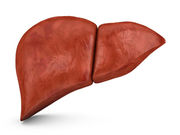More severe fibrosis for patients with obstructive sleep apnea/hypoxia versus those without
MONDAY, Aug. 8, 2016 (HealthDay News) — Obstructive sleep apnea (OSA)/hypoxia is associated with progression of nonalcoholic steatohepatitis (NASH) in pediatric patients with nonalcoholic fatty liver disease (NAFLD), according to a study published online Aug. 5 in the Journal of Hepatology.
Shikha S. Sundaram, M.D., from the Children’s Hospital Colorado in Aurora, and colleagues studied 36 adolescents with biopsy proven NAFLD and 14 lean controls. Participants underwent polysomnograms, liver histology scoring, laboratory testing, urine F(2)-isoprostanes, and 4-hydroxynonenal (4HNE) liver immunohistochemistry.
The researchers found that the OSA/hypoxia group (69 percent of NAFLD subjects) had more severe fibrosis than those without OSA/hypoxia (P = 0.03). There were correlations for higher F(2)-isoprostanes with apnea/hypoxia index and percent of time O2 saturation (SaO2) <90 percent, and an inverse correlation with SaO2 nadir. Subjects with the greatest 4HNE staining had the most severe OSA/hypoxia (P = 0.03). There were correlations for increasing F(2)-isoprostanes and 4HNE hepatic staining with worsening steatosis (P = 0.04 and 0.007, respectively). Subjects with definite NASH had greater oxidative stress compared to those with borderline/not NASH.
“These data support the role of nocturnal hypoxia as a trigger for localized hepatic oxidative stress, an important factor associated with the progression of NASH and hepatic fibrosis in obese pediatric patients,” the authors write.
Full Text (subscription or payment may be required)
Editorial (subscription or payment may be required)
Copyright © 2016 HealthDay. All rights reserved.








